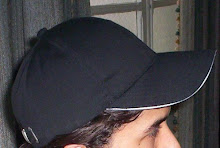By : Art Gib
External beam radiation therapy has long been the standard for treating most cancer types in the world of radiation treatment. Brachytherapy, the lesser known form of radiation treatment among the general populace, has been around almost as long as particle and wave form radiation therapy. It's brought success in cancers dealing with a long range of bodily locations such as the head and neck, lung, cervix, breast and most commonly the prostate.
This article will touch on some information about what brachytherapy is along with an overview of the process and expectations one should anticipate.
Implanting Radioactive Seeds
Usually brachytherapy is slightly invasive. That is, it will probably involve breaking of the skin to insert what is known as a "seed". The seed is usually a small rod-like tube that encases a radioactive compound. The seed is inserted into the tumor in such a way that the radiation will affect the cancer cells and disrupt their cellular division to ultimately kill or stop the cancerous cell growth. Mold Brachytherapy is an exception. In this case the radiation source can go next to the tumor, set next to the skin adjacent to the cancerous mass.
The seeds are about the size of a small grain of rice and have a short range of radiation kill. The radius of the radiation field that emits from the rice that is used to kill the cancer cells is only a few millimeters. In fact, the trunk part of the word, brachy, is Greek meaning "short."
The Procedure
In this instance I'll use the example of prostate treatment as a case example to give an overview of what one may expect. So, before the radiation therapy begins, the doctor will do the preliminary check ups. Procedures like EKG, blood tests, and x-rays may be involved depending on the risks. But usually an ultrasound of the prostate will be done to make sure it's clear and to identify the tumor beforehand. With the images captured, the doctors and clinicians will know what they are up against and know how many seeds need to be implanted.
The nice thing about this sort of application is that it's an outpatient procedure. Sometimes the treatment will only last as long as an hour. The patient will usually get a local anesthetic so feeling from the waist down is numbed.
After the painkiller has set in, an ultrasound probe will be inserted into the rectum to bring up video of the prostate for easy guidance. The seeds will be planted, sent through tiny needles, after the tumor is targeted. The needles will enter through the skin between the scrotum and the rectum. Usually there are about 50 to 100 seeds sent into the cancerous portion of the prostate.
When all is said and done, the patient will usually have a catheter inserted and left in for several hours to a day. Post procedure, an ice bag will be used to prevent swelling. After all of that, life can come as it does normally, but rest and no heavy activity is typically prescribed. Four or five days are the estimated time for normalcy among most patients.
Friday, March 27, 2009
Subscribe to:
Post Comments (Atom)


No comments:
Post a Comment